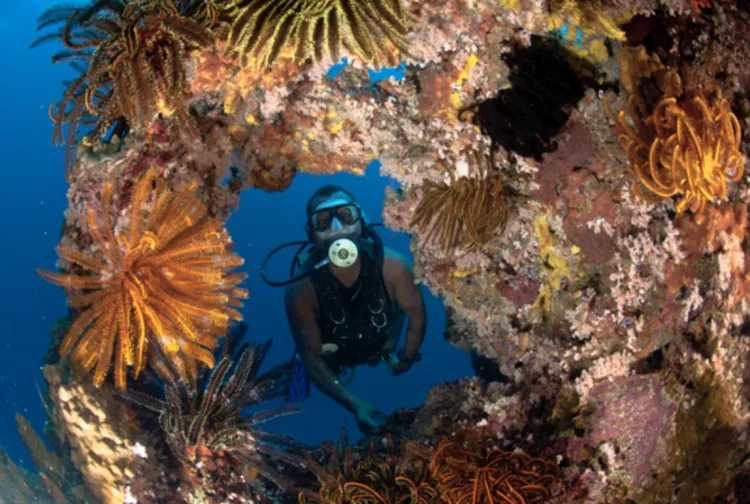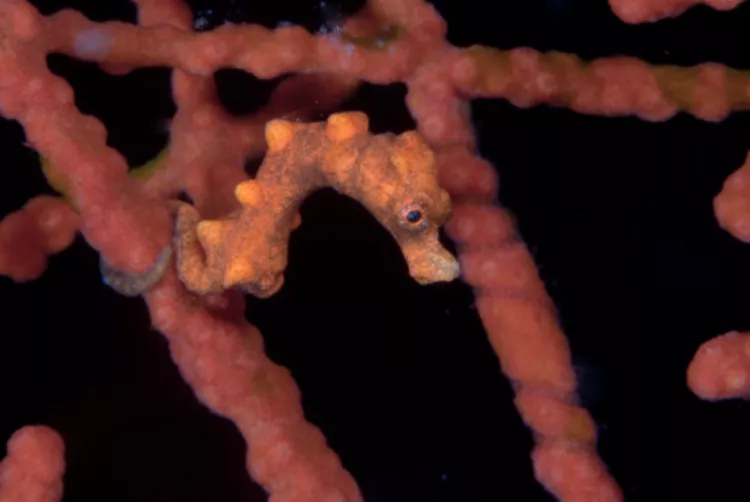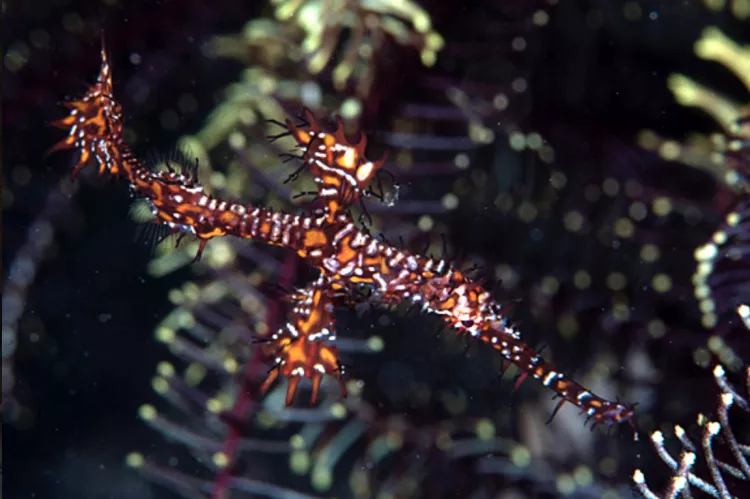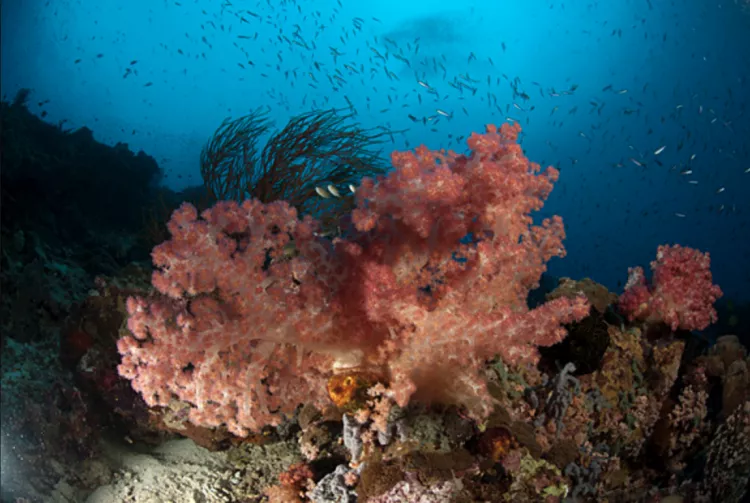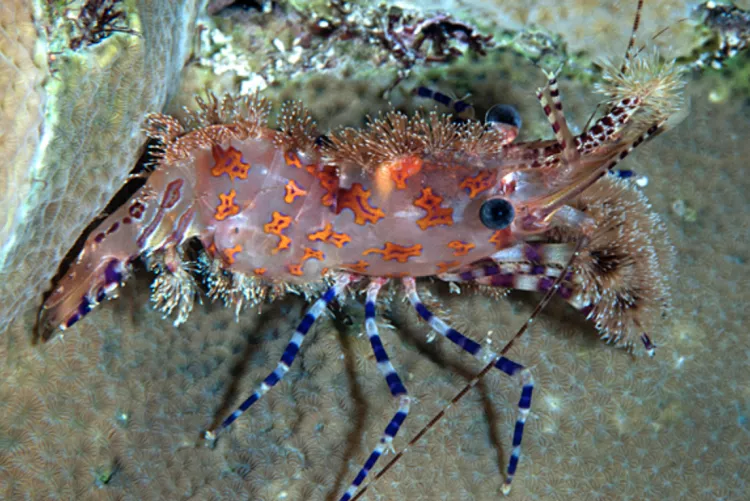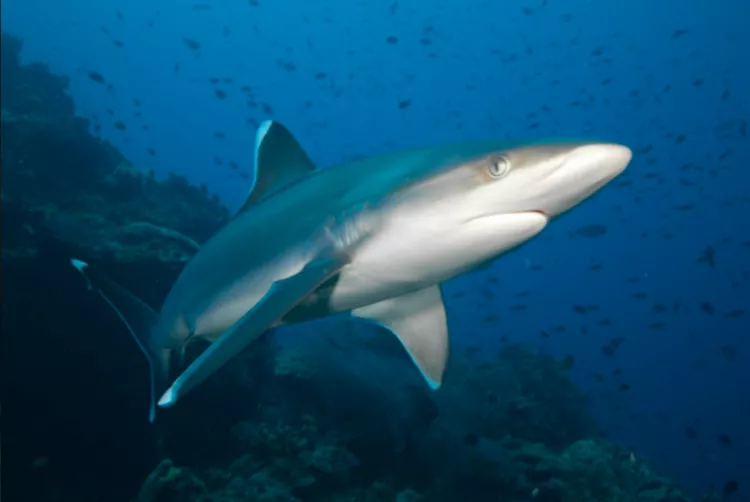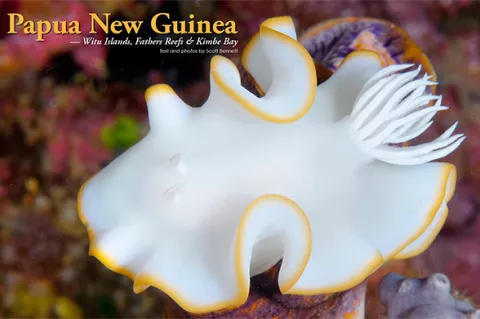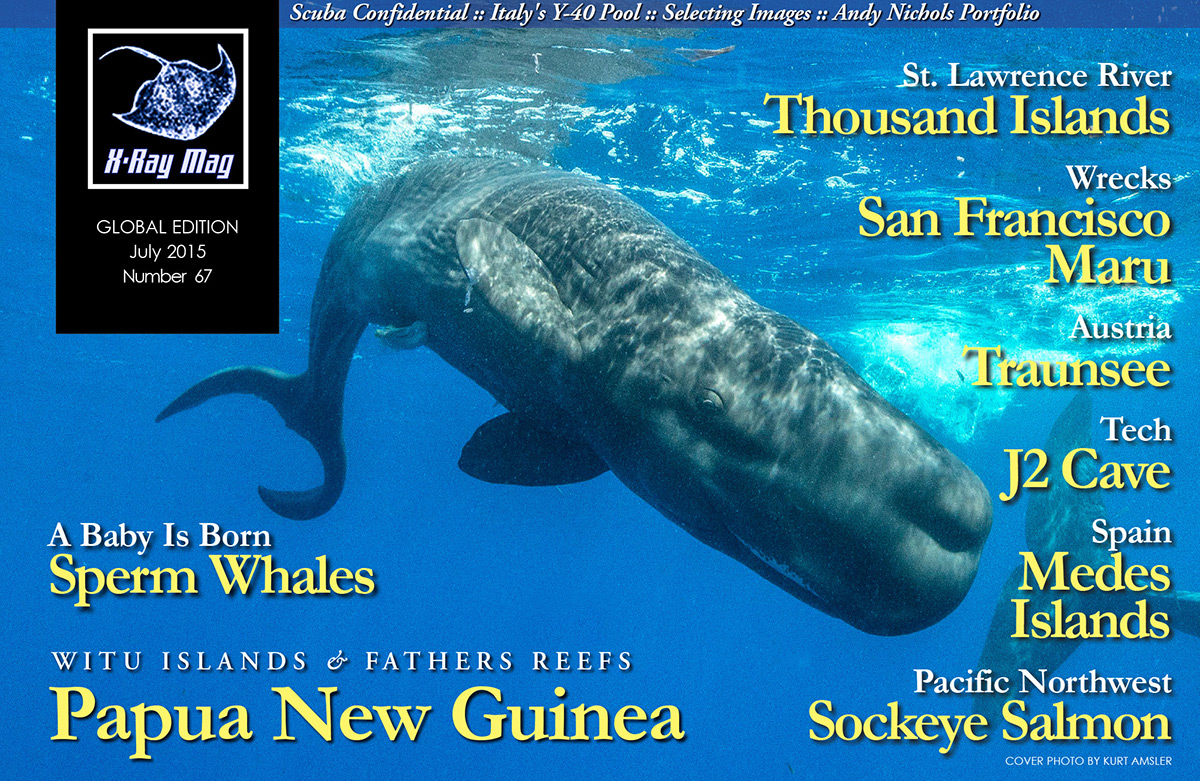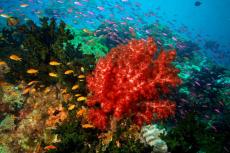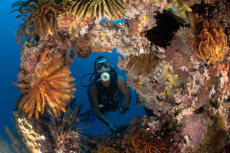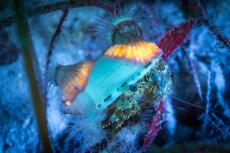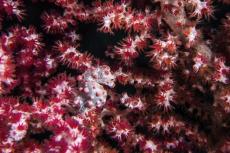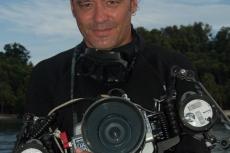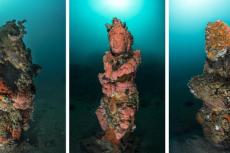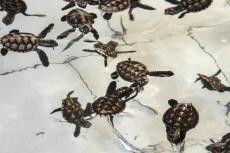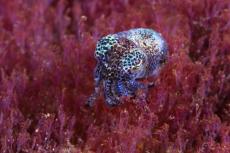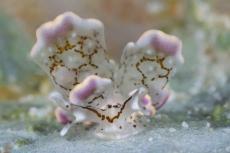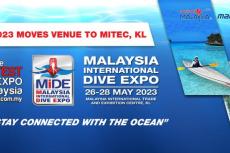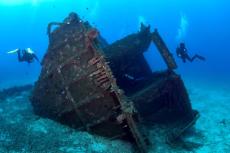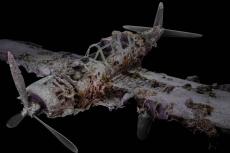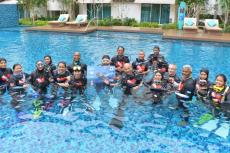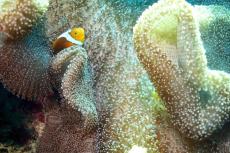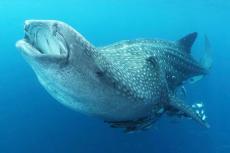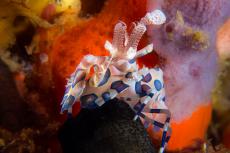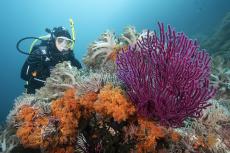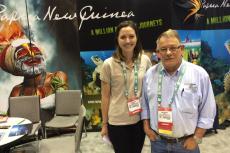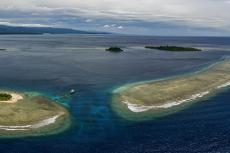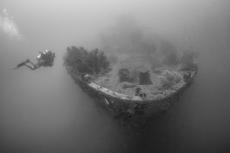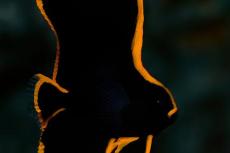When it comes to superlatives, diving and Papua New Guinea certainly go hand in hand. Sharing the world’s second largest island with Indonesian West Papua, the island nation is positioned at the easternmost extremity of the Pacific’s famed Coral Triangle—an undersea Eden boasting an unrivalled diversity of life.
Contributed by
Anchored off the east coast in the Bismarck Archipelago, New Britain is home to some of the country’s finest diving. At more than 500km in length, the country’s largest island is home to world-famous Kimbe Bay. Encompassing a huge sweep of the north coast, it is home to 900 fish species and some 70 percent of the coral species found in the entire Indo-Pacific.
Starting from Walindi, I embarked upon a nine-day itinerary that is one of the signature trips of the liveaboard FeBrina, taking in Kimbe Bay, the Witu Islands and Fathers Reefs.
Not wishing to run afoul of prospective flight delays, I opted to arrive almost two full days early. On hand to meet me was owner Max Benjamin, who, along with wife Cecilie, runs Walindi Plantation Resort.
Arriving at the bar for a pre-dinner drink, I met Josie, who would be one of the two divemasters on the trip. Also on hand were dive centre managers Dan and Cat. “Would you like to dive tomorrow?” asked Cat with a smile. Now that was a no brainier!
The next morning after breakfast, I assembled my photo gear and headed for the dive centre. Kimbe Bay is one of my all-time favourite dive locations, and I was thrilled to get in some extra dives prior to the trip.
Conditions were the epitome of perfection, with a clear, blue sky and glassy sea. Providing a dramatic backdrop was the string of volcanoes flanking the bay’s perimeter. Mt Gabuna, located directly behind the resort, was also active, a fact made clear by the sulphurous aroma that wafted through the previous evening.
Diving Kimbe Bay
Otto Reef. Our first destination was Otto Reef, a 45-minute trip from the resort and unique in having one of the only male names in the entire bay. The precipitous walls were a coral wonderland, as massive plate coral slabs jostled for space with staghorn, table and brain corals. Tangles of rope sponges cascaded from the walls, while high above, a large school of chevron barracuda created a dramatic photographic backdrop to the reef’s dramatic palette.
Joelle’s Reef. An isolated seamount, its summit was a gaudy patchwork of anemones, hard corals and giant orange sponges. A pinjalo school cruised the reef top while big-eye trevalley and barracuda patrolled the perimeter. The dive’s undoubted highlight was the anemones. Resplendent in hues of crimson, blue, magenta, yellow and white, every single one had tentacles withdrawn. One apparently brown specimen was revealed by my strobes to be blood red, resembling a large tomato. Sheer photo bliss!
Vanessa’s Reef. We concluded the day at Vanessa’s Reef. The uppermost section features a plateau bursting with gorgonians, corals and sponges. Descending to 26m revealed some truly imposing sea fans, with specimens easily three metres across.
Returning late in the afternoon, we encountered a pod of melon-head whales basking on the surface. They allowed a surprisingly close approach before vanishing en masse. Naturally, I had left my unhoused camera back in the room. A few weeks earlier, a pod of orcas had been observed here. Kimbe Bay never ceases to amaze!
The liveaboard
While few liveaboards are synonymous with their owners, the FeBrina is one very notable exception. Skipper Alan Raabe is a true Papua New Guinea legend, having dived the country’s reefs for over 20 years.
Bags packed, I headed down to the boat just after 5 p.m., where I met divemasters Josie and Digger. After unloading my gear, Josie took me on a tour of the boat and I met the rest of the crew.
That first evening, we were to sleep on board but have dinner at the resort. After settling in, I had a chance to meet a few of the other guests from Belgium, New South Wales and the United Kingdom.
Getting around the vessel was not without the odd mishap. After unpacking, I attempted to climb back up the steps carrying my empty duffel bag. Struggling up in the confined space, I opted to go back down, only to miss a step and scrape my leg on the steel step. It didn’t look pretty, but Josie patched me up. Not exactly the most auspicious start to the trip!
More Kimbe
With everyone finally on board by mid-morning, we set out for a day’s diving in Kimbe Bay. First up was Vanessa’s Reef and I was more than happy for a return visit.
Zero Wreck. As we headed to the bay’s western extremity, I was thrilled to discover our second dive would be a Zero wreck. Nicknamed “Zero” by American troops during the Second World War, the Mitsubishi A6M5’s were among the most famous of all Japanese warplanes. Featuring a wingspan of 11m and attaining speeds of up to 564 km/hr, they were often utilized during kamikaze raids. Resting at a depth of 15m on a bottom of silt, the Zero wreck was discovered in 2000 by a local fisherman. It is believed the pilot bailed out before it hit the water. Although visibility left a lot to be desired, it was nonetheless fascinating, being my first ever aircraft wreck. An anemone perched atop the pilot’s seat proved especially photogenic.
Anne Sophie’s Reef. This dive site teemed with mammoth orange sponges, barrel sponges, fans and soft corals. I was immediately drawn to a peculiar silhouette in the blue. On closer inspection, I discovered it to be a large Napolean wrasse. The moment I put my strobes into position, it beat a hasty retreat. Foiled again!
Tropical treatment
Before dinner, Alan removed my bandage, revealing a red welt that looked decidedly more unpleasant than on the previous day. My scrape had transformed into a full-blown tropical ulcer with a skin infection directly beneath it. One would assume that salt water would actually help with the healing process.
Although true in cold salt water, it is another story in the tropics, with Kimbe Bay’s 31°C water being a briny soup of toxicity. Combined with constant friction due to constant removal of my wetsuit, conditions were ripe for a nasty infection. “We’d better get you on antibiotics right away,” he intoned seriously. By this point, everyone gathered to stare and cringe at my contusion. Nice.
Mealtime quickly proved to be a trip highlight. From the tiny galley, liveaboard staff created an array of culinary wonders. Dinner was served à la carte along with a complimentary glass of wine. Dishes ranged from roast lamb, to pizza and Indian-style curry. An unexpected bonus was a breadmaker, which ensured freshly baked bread and rolls daily.
Witu Islands
Around 11:00, we set out on our overnight departure for the Witu Islands. Situated at the northwest of Kimbe Bay, these outlying jewels are legendary for their big fish action and 30+m visibility. Swept by strong currents, Witu boasts a variety of outer reef slopes jam-packed with hard coral gardens along with submerged pinnacles and steep drop-offs radiant with soft corals.
The next morning, a pounding on my door roused my slumber. “Time to go diving,” enthused Josie from the hallway beyond. After a dive brief and a much-needed jolt of coffee (two, in my case), everyone was raring to go.
Goru Arches. This site was located on a coral ridge some 20 minutes from our overnight anchorage. Divemaster Digger and I hit the water first and headed straight for the arches. Being the day’s first dive, we stood a good chance of encountering the school of bumphead parrotfish that frequently spend the night near the arch. Sure enough, they were in attendance and I managed to get close enough to nab a few images before they dispersed.
Or so I thought. Back on the boat, I discovered that my housing’s focus selector knob had accidentally been bumped to manual, resulting in a slew of out-of-focus images. Curses!
Ablaze with colour, Goru’s twin arches left me grasping for superlatives—framed with sweeping crimson sea fans in hues of crimson, white and orange. Soft corals of pink and lavender played host to legions of feather stars while the seafloor was dotted with whip corals, squat barrel sponges, orange sponges and the occasional green tree coral.
The abundant fish life included midnight snappers, shaded batfish, oblique-lined sweetlips, racoon butterflyfish and giant squirrelfish. With so much to take in, it was difficult to know where to aim the camera. Fortunately, a second dive here ensured that I was able to get the missing images.
Back on board, I hadn’t even removed my wetsuit before a crewmember approached to take my breakfast order. A full hot breakfast of bacon, eggs, beans and toast was soon waiting in the dining area along with a perpetually full pot of brewed coffee. Talk about service!
Witu Drift. After breakfast, the wonders kept coming. Witu Drift featured a stunning wall with a sheer wall plummeting to the sandy bottom below. Visibility was exceptional at over 30m, the best of the entire trip. Electric soft corals and anemone-clad barrel sponges shrouded the walls along with a dazzling array of fish, including humpback snappers and oblique-lined sweetlips. Feather stars gripped barrel sponges as bannerfish buzzed and soft corals abounded.
Wire Bay. After exclusively shooting wide angle since Walindi, I was eager to indulge in some serious macro photography. Wire Bay was just what the doctor ordered, with Garove Island revealing the remains of a massive sunken volcanic caldera. Wire Bay’s black sand proved a mecca for muck diving, yielding a kaleidoscope of strange and remarkable creatures. The non-stop critter parade included leaf scorpionfish, nudibranchs, hingebeak shrimp, Steinitz’ shrimpgoby, bicolour angelfish, false clownfish, spinecheek anemonefish and pink anemonefish.
After the dive at Wire Bay, a dugout canoe full of kids appeared alongside. With curly hair tinged with blond and flashing dazzling smiles, they made for especially pleasing portrait photography. It is one of the world’s universal consistencies that goes beyond language and culture; put kids in front of a camera and wait for the show!
A night dive at Wire Bay proved equally magical, the blanket of darkness revealing a different cast of enchanting characters. A crab posed atop an old tire, while anemone hermit crabs and moon snails traversed the substrate on their nocturnal forays. I spent the ensuing 71 minutes glued to my camera’s viewfinder. Digger and I played hide-and-seek with a diminutive whip coral goby that proceeded to retreat to the coral’s opposite side just as I got its eyes in focus. A couple of bigfin reef squid hung near the surface as juvenile bigeye trevally fed beside the boat.
With such an action-packed itinerary, nightlife was definitely not a feature of liveaboard daily life. Dinner finished, everyone was pretty much wiped out and in bed by 9 p.m. By the time photos were downloaded and edited, I had the entire dining area to myself by 9.30 p.m.
Dickey’s Knob. The remaining dives at Witu were no less spellbinding. Dickey’s Knob featured a large bommie rising to within 5m of the surface. The dive brief bore an ominous note as Josie announced the reef top was covered with highly toxic corallimorpharians. Despite their nondescript olive brown appearance, the small anemone-like creatures produce a mass of white filaments called “acontia” possessing stinging nematocysts packing a powerful venom. Easily capable of piercing a wetsuit, the resulting pain can last for four to six weeks. Hearing that bit of information made me want to give the dive a miss. But Josie assured me that I wouldn’t become a large burning welt, and with some trepidation, I decided to take the plunge.
We started deep at 26m, with Digger bottling for sharks. In no time, six grey reefs cruised in for a look, but the extremely low light meant no photos. For the remainder of the dive, I was so conscious of trying to avoid a corallimorpharian collision that I nearly overlooked everything else! One of the reef’s distinguishing characteristics was black coral, commonly encountered here but not in Kimbe Bay. Yellow damsels encircled knotted fan corals as hordes of snappers and surgeonfish swarmed about. Just off the wall, a small chevron barracuda school cruised the blue. In fact, it seemed every site in Witu had a barracuda school. Was it possible to be blasé about barracudas?
Originally from Alotau at the southern tip of the country, Digger easily ranks as one of the best dive guides I’ve ever met. Possessing a broad grin and mischievous sense of humour, his photographic knowledge proved impeccable, not only searching out prime underwater views but also assisting novice photographers with their photo techniques.
Having been working on the liveaboard for 15 years, Digger has dived with some of the world’s premier underwater photographers, from David Doubilet to Howard Hall. In 2010, he even had experience filming underwater with an IMAX camera for a production on Papua New Guinea.
Photography tips
One of the trip’s most pleasant experiences was being re-acquainted with a piece of photo gear that had been neglected in recent years: my 10.5mm wide-angle lens. After a few dives produced less than satisfactory results, the lens was quickly relegated to the occasional above-water shot. However, at Digger’s insistence, I decided to give it a shot. “Trust me, you’re going to love this lens,” he promised. After a crash course in strobe placement, I couldn’t wait to get started.
Dickie’s Long One. This dive site (I don’t even want to know the origins of the name) featured an exceptionally beautiful wall with a precipitous drop to the sandy bottom below. Soft corals and anemone-clad barrel sponges shrouded the wall as a dazzling array of reef fish swirled about. Humpback snappers cruised in a wide band along the wall below along with congregations of oblique-lined sweetlips.
Positioning my camera close to a soft coral so it was practically brushing my domeport, the results could be summed up in one word: Wow! Compared to the 10-20mm, the images were tack-sharp from corner to corner. Digger’s close-up wide-angle techniques were a revelation and for the remainder of the trip, the 10.5 was virtually glued to the camera! Digger was definitely right.
Dickie’s Place. Another superlative muck site was Dickie’s Place. Situated just offshore from Dick’s house, the black sandy bottom housed a critter contingent to rival the famed Lembeh Strait of Indonesia. Descending no deeper than 18m, Digger’s eagle eyes discerned a bevy of critters including leaf scorpionfish, saw blade shrimp and commensal shrimp, crab-eye gobies, spotted sand gobies and razor wrasse, which ensured my camera’s shutter fired incessantly for the ensuing 84 minutes.
Digger overturned a clump of broken coral to reveal a pair of strange pulsing red objects. Initially baffled, I realized they were a pair of file clams. Previously, I’d only ever seen them ensconced within a rock face crevice, so seeing them out in the open was quite unexpected. Their curious erratic motion reminded me of a pulsating cartoon heart.
With air waning and buoyancy zilch, we spotted an odd little ghost pipefish in 3m of water right under the boat. Green with a series of knobbly protuberances, it looked like a cross between a robust and Halameda ghost pipefish. I had just enough time to fire off a pair of images before my tank drained entirely.
A subsequent dive at night proved equally enthralling. Scanning the sandy bottom, Digger’s torch beam came to rest on a crusty filament amid some scraggly blades of seagrass. His insistent torch beams indicated this was no mere strand. Eyes straining, I soon discerned it to be a pygmy pipehorse. Anchored to a blade of seagrass with its tail, I marvelled at how Digger even saw it in the first place! Even with a close-up filter attached, it was but a mere wisp in my camera’s viewfinder. Closer scrutiny of the area revealed them to be quite abundant and I even found a few on my own.
Amid some feather stars congregated at the end of a sunken log was a pair of ornate ghost pipefish. Photographing a dark pipefish against a dark feather star at night was the epitome of challenging. I fired where I thought they were and hoped for the best. Happily, there were many more easily photographed subjects about. A dwarf scorpionfish lumbered across the substrate as lizardfish grinned and anemone hermit crabs scuttled.
At the dive’s end, I was led towards a coral cluster on the sand. Atop it sat a crab with a serious sense of design. Sporting spindly purple limbs with a couple of ascidians affixed to its head, its camouflage was flawless. Even when reviewing my images back on the boat, I could barely tell what I was looking at, in the photographs.
Lama Shoals / Krackafat. For some strange reason, a number of the Witu sites bore names pertaining to sexual euphemisms. Krackafat, also known as Lama Shoals, was no exception. An Aussie slang term alluding to gratification, this seamount the size of a football field was supposed to be so exciting that it would… well, you know. While I can attest the dive didn’t procure the promised result, the dive was certainly exciting with a maelstrom of fish whirling in all directions. Trevalley, sharks, tuna... you name it and it was there!
On the second dive, the jacks had dispersed and were hanging about in smaller groups near the surface. A Napoleon wrasse hung just off the wall, maddeningly out of camera range. I was beginning to think I had a Napolean photographic curse!
At the dive’s conclusion, an unexpected hazard was provided by legions of jellyfish congregating around the mooring line. While I miraculously emerged unscathed, nearly everyone else got stung, requiring a painful treatment of hot water and vinegar, which Digger applied with almost callous glee.
After breakfast, a dugout canoe appeared with some women and children with a woven basket of coconuts, bananas and flowers, which we traded for rice, noodles and some soap. Even out of the water, it seemed like there was never any rest for my camera. After several fantastic days, it was time to move on.
Fathers Reefs
Anchor hoisted, we set out for our overnight voyage to Fathers Reefs. Arriving before dawn, the trip’s most far-flung destination proved to be its most dramatic. Dominating the horizon was the soaring silhouette of Ulawun Volcano. One of the country’s most active, its lofty 2,334-metre summit is the highest in the entire Bismarck Archipelago.
Underwater, the scenery was no less impressive with a succession of coral pinnacles ascending from the depths of the Bismarck Sea. Famed for its pelagics, Alan reckons Fathers Reefs is home to the healthiest shark population in all of Papua New Guinea. Over the years, a few specific locations have been designated as shark-feeding sites, with the sharks quickly becoming habituated to the entire process.
Norman’s Knob. Our Fathers Reefs experience commenced with a pair of morning dives at Norman’s Knob, one of the area’s myriad of coral-shrouded seamounts. From squat lobsters in feather stars to big-eye trevalley and blue-spotted groupers, the site proved equally photogenic for wide-angle and macro alike. As at Otto Reef, the anemones all had tentacles withdrawn, with specimens of different colours sitting side by side. Talk about a photographer’s dream!
Shaggy’s Reef. Finally, it was time for our shark dive at Shaggy’s Reef and it did not disappoint. No sooner had we hit the water when the first silvertip shark appeared, dutifully following us to the feeding site like a faithful dog. Being the last to arrive, I quickly took position along the ridge top amphitheatre where the show had already started. Along with the silvertip, whitetip and grey reef sharks buzzed about like bees, all eager for some of the fishy morsels in Digger’s perforated baitbox. The entire procession was quite orderly, with not one shark displaying an iota of aggression, yet swooping close enough for full-on portraits.
In no time, other interested parties appeared, all wanting a piece of the action. Red bass and bluefin trevalley circled expectantly, while a massive Napolean wrasse kept to the periphery. The latter proved especially tolerant and with perseverance, I was finally able to get my long-cherished Napolean image!
Killibob’s Knob was another brilliant shark dive, although the star attractions were definitely more on the rambunctious side. A muffled exclamation of “Hey” caused me to turn to see a tiny whitetip snapping at a diver's hand. I guess that adage about small dogs applies equally to sharks; It’s the small ones you have to worry about! Sharks weren’t the only ones looking for a handout, as a large free-swimming moray quickly joined the fray. It seemed especially perturbed by my firing strobes; at one point, I looked up to find it staring me in the face. Considering it had a body thicker than my thigh, I made a hasty retreat. Heading back to the boat, Digger removed his fins and walked along the mooring line like a tightrope walker. The school of batfish that greeted us on our arrival were still there. It certainly begged the question as to what they do all day.
Lesley’s Knob. After the shark adrenaline rush, the subsequent two days at Fathers Reefs proved equally enthralling, with an array of photo ops to overload my rapidly filling hard drive. For me, one of the trip’s most memorable aspects was the anemones. Never in my life had I seen such an astonishing array of colours. One specimen at Lesley’s Knob had its tentacles withdrawn entirely, resembling a gelatinous magenta ball.
A night dive revealed scorpionfish, slipper lobsters, cuttlefish and a variety of nudibranchs, some of which I had never seen before. The definite highlight was a saron shrimp, an extravagant species featuring a white body with orange spots accented by a row of bristles along its back. Another check on my photographic wish list.
Father’s Arch was reached via a rope spanning a yawning chasm plummeting to over 50m. With the site’s deepest portions approaching 40m, it was put in place to guide divers from the wall near the mooring platform to the site. Without it, an excursion down the wall would quickly consume valuable bottom time. The actual arch was long and narrow, somewhat reminiscent of a scene from the American southwest.
After firing off some shots, Digger motioned me to follow and he showed me the entrance to what I perceived to be a cave. Urging me to enter, the interior was stunning. Luminous soft corals cloaked the walls, while light from the surface above entered through a rooftop opening. Aiming upwards, I was able to get a shot of Josie passing overhead with a torch.
Swimming back along the line, I saw Digger motioning me over to the wall. There, on the rock face was a white Heron ardeadoris nudibranch. With his assistance, I tried something new: wide-angle nudibranch photography. Back on board, I was more than pleased with the results. Thanks, Digger!
Jayne’s Gully featured sheer walls plunging to the depths, with colourful sponges and gorgonians sprouting from amongst the crevices. A highlight was a pair of friendly hawksbill turtles. Small yet utterly fearless, they practically bumped my domeport, providing some of my favourite images from the entire week. By mid-afternoon, it was time to head back to Kimbe Bay for our final two days of diving.
Water attacks between Digger and the Aussies added a touch of drama to the sedate periods between dives. One day during lunch, we were treated to the extraordinary sight of twin waterspouts, which fortunately remained a safe distance from the boat.
By mid-week, Alan had pretty much reverted to his colourful self, entertaining us with anecdotes that would send the political correctness police into a tizzy. All the while, the liveaboard staff produced a never-ending array of tasty between-dive snacks. Thank goodness for stretchy waistbands!
Return to Kimbe Bay
South Emma. Back in Kimbe, we visited a number of sites. An early morning dive at South Emma featured a swim-through at 30m. Alas, attempts to shoot divers exiting the cave failed miserably, but it was Digger to the rescue. Leading me deeper, we came across a photogenic stand of whip corals.
Nearby, an elephant ear sponge and a large broken barrel sponge made for some dramatic images and the swim-through was quickly forgotten. At the mooring line, dramatic coral clusters made for interesting foreground subjects with the FeBrina silhouetted above.
Joelle’s Reef / Inglis Shoals. The remainder of the day was spent visiting seamounts Joelle’s Reef and Inglis Shoals, both swarming with reef fish and pelagics alike. A night dive at Kirsty Jane’s revealed bumblebee shrimp, basket stars, spaghetti worms and a long-clawed squat lobster. A snake-arm anemone protruded from the sand, its tentacles methodically transporting morsels of food to its mouth. After eight diving days, it was almost sensory overload! We spent the night anchored in Kimbe Bay as a glorious sunset set the sky ablaze.
At the end of the last night dive, everyone climbing up to the dive platform got hit with an unexpected surprise: a burst of cold water from the hose! After a solid week of water attacks by the Aussies, Digger got his revenge. On the last morning of diving, the Aussies found their wetsuits in a bucket in the ship’s freezer, with Digger laughing uncontrollably.
Susan’s Reef. For our final pair of morning dives, Alan saved one of the best dives for last. Distinguished by its extravagant forest of red whip corals, Susan’s Reef was my favourite site. Colours dazzled with eye-popping exuberance, while between 8-15m, a trio of massive gorgonians dripped with feather stars. Sponges and a plethora of other growth enveloped every square centimetre of the reef, creating a photographer’s dream.
Topside attractions
After a superlative stay in New Britain, it was time to head for my next destination. With travel plans proceeding smoothly up to that point, my suspicious side deliberated it was time for something to go awry. And sure enough, it did. Two days of cancelled flights from Hoskins extended my stay at Walindi. (Mind you, I can hardly think of a better place to be marooned!)
Still, this travel cloud had a silver lining. Prior to my attempted departure, I had lamented I had never got to experience any of Walindi’s terrestrial attractions. Happily, I got my chance.
The first afternoon, I embarked on a bird-watching hike with some fellow divers. Trudging uphill along the thickly forested trail, we emerged to an open ridge top that provided commanding views along the entire coast. Our guide Joseph was a natural born twitcher, spotting endemic blue-eyed cockatoos, eclectus parrots and Blyth’s hornbills.
The following day, we took a four-wheel drive trip to the “hot river”, a stream warmed to 43°C by a volcanic spring. The red mud found along the riverbank provided a natural exfoliating treatment, giving us our very own jungle spa. Just the ticket after nine exhilarating days of diving!
Afterthoughts
In retrospect, sensory overload could be used to describe the entire trip. With wrecks, reefs, sharks and muck, the nine-day trip was truly spectacular and encapsulated the best that Papua New Guinea had to offer. Combined with the outstanding service by Alan and his superb crew, it was truly sad to say goodbye. Next time, however, I will let someone else carry my bag back up the stairs! ■

